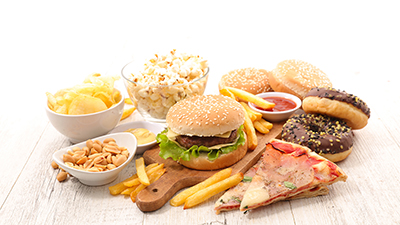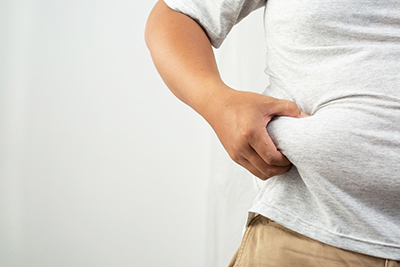Quashing Cravings: Some Food for Thought
What Are Cravings?
If you have ever experienced the urge to eat certain foods—sweet, salty, fatty foods—or even get excited at the thought of tasting and feeling while eating, then you already know what cravings are. Food cravings are intense desires for a particular food.[1], [2], [3] Cravings are very common, and are known to happen to 90% of the people.[4]
Why and How Do Cravings Happen?
While we generally associate food cravings with poor eating habits, lack of self-control, or being naturally a “sugar addict,” cravings are much more multifaceted than we perceive. Cravings occur due to the complex interactions of brain-digestion feedback systems, stress, emotions, habits, and exposure or access to food.[5], [6], [7]
Studies that sought to understand cravings have shown that those—especially ones that relate to sensorial exposures to visual, scent, and taste food cues—are associated with increases in physiological signals such as heart rate, stomach activity, and salivation. Patterns of increased activity of neural responses in the brain’s reward system have also been observed with the occurrence of cravings. Such activity fosters feelings of pleasure, which may influence our food choices, eating behaviours, and body weight.[8], [9], [10], [11]
 Is It Bad to Have Cravings?
Is It Bad to Have Cravings?
Let’s take a moment to differentiate hunger and appetite from cravings, in the context of food. Hunger is a compelling physiological signal of lack of food (often experienced as a sensation of tightness in your stomach). Hunger can be coupled with the desire to eat. Appetite is an awareness and desire for food. Appetite is experienced as feeling the anticipation of an upcoming meal, a sharper awareness while eating, and satisfaction after consumption. To reiterate, cravings are urges to eat a particular food, to think about food often; a desire to constantly snack, or a need to fill up on food in general. Cravings can increase your appetite, regardless of whether you are hungry or not. There are many overlaps between hunger, appetite, and cravings and how, remarkably, we can experience them sometimes all at once or on separate occasions.[12], [13], [14]
 Cravings are not inherently bad.[15] Clinically, observing food cravings is important because of its implications in eating habits, digestive function, and weight management, as well as in relation to other situational factors (e.g., lifestyle, exercise, food accessibility, stress support). Hyperpalatable foods, characterized by their heightened palatability and the incorporation of flavours such as sweetness, saltiness, or richness, have the capacity to modulate the endocrine system. This modulation involves the stimulation of hormonal feedback loops and the production of metabolic, stress-related, and appetite-related hormones, including insulin, cortisol, dopamine, leptin, and ghrelin. Consumption of hyperpalatable foods too often can confound the normal neurohormonal-gastrointestinal feedback signals and can influence how cravings continue despite having eaten enough food.[16], [17]
Cravings are not inherently bad.[15] Clinically, observing food cravings is important because of its implications in eating habits, digestive function, and weight management, as well as in relation to other situational factors (e.g., lifestyle, exercise, food accessibility, stress support). Hyperpalatable foods, characterized by their heightened palatability and the incorporation of flavours such as sweetness, saltiness, or richness, have the capacity to modulate the endocrine system. This modulation involves the stimulation of hormonal feedback loops and the production of metabolic, stress-related, and appetite-related hormones, including insulin, cortisol, dopamine, leptin, and ghrelin. Consumption of hyperpalatable foods too often can confound the normal neurohormonal-gastrointestinal feedback signals and can influence how cravings continue despite having eaten enough food.[16], [17]
 In obese men, it has been observed that regions of the brain involved in sensory processing, emotional regulation, conditioning, and motivation have suppressed activity when presented with food. Interestingly, it has also been observed that there is an additional required effort to increase cognitive control in response to food stimulation in obese compared with nonobese men.[18] Improving control, food cravings, and mood also seem to be in concert with achieving long-term weight-loss success.[19] It is important to mention that weight management is complex, and there is an ongoing exploration of defining what metabolically healthy is, outside the parameters of measuring weight (and cravings) alone.[20], [21]
In obese men, it has been observed that regions of the brain involved in sensory processing, emotional regulation, conditioning, and motivation have suppressed activity when presented with food. Interestingly, it has also been observed that there is an additional required effort to increase cognitive control in response to food stimulation in obese compared with nonobese men.[18] Improving control, food cravings, and mood also seem to be in concert with achieving long-term weight-loss success.[19] It is important to mention that weight management is complex, and there is an ongoing exploration of defining what metabolically healthy is, outside the parameters of measuring weight (and cravings) alone.[20], [21]
What Can I Do to Manage My Cravings?
Being mindful of how cravings come up and how they can affect your health is an integral part of an ongoing path to good health. You can consider addressing your cravings the following ways:
- Acknowledging changes in your mood, routine, stress levels, sleep quality, environment, hydration status, etc. can help you develop a better sense of what factors may predispose you to developing cravings. For example, being mindful of your exposure to food-related content such as on devices or TV advertisements, especially while eating.
- Continually finding ways to engage in stress-reducing activities or hobbies to help you work through the neuropsychological aspect of the build-up of cravings.
- Engaging in regular physical activity not only improves mood and overall wellbeing but also helps to regulate hormones and neurotransmitters involved in the development of cravings.[22]
- Prioritizing sleep, particularly ensuring that you are getting enough sleep, is necessary in the ongoing management of cravings. Lack of sleep can be disruptive to hormone and neurotransmitter regulation and may contribute to an increase in cravings, especially for sugary and high-calorie foods.
- Ensuring that you are consuming nutritionally dense meals, opting for foods high in protein and fibre to prolong satiety after meals and curb cravings.
- Incorporating nutrients (nutraceuticals) to assist in addressing physiological dysregulation that may contribute to increase in cravings. As an example, chromium picolinate is a mineral (micronutrient) that plays a role in regulating blood-sugar levels and reducing cravings for high-carbohydrate and sugary foods.[23], [24]
Conclusion
Acknowledging and addressing cravings is vital for overall health, considering their multifaceted origins. While not inherently negative, their impact on eating behaviours requires attention. Adopting a holistic approach involving lifestyle adjustments, dietary choices, and psychological wellbeing is crucial for effective craving management and long-term health promotion.
 Dr. Kim Abog, ND
Dr. Kim Abog, ND
Dr. Kim Abog is a registered naturopathic doctor and doula based in Toronto, Ontario. She has a special interest in fertility and reproductive health. She helps people by facilitating health-management plans with them, connecting them to evidence-informed integrative health solutions, and helping them thrive.
kimabog.com
[1] Alonso‑Alonso, M., S.C. Woods, M. Pelchat, P.S.Grigson, E. Stice, S. Farooqi, C.S. Khoo, R.D.Mattes, and G.K. Beauchamp. “Food reward system: Current perspectives and future research needs.” Nutrition Reviews, Vol. 73, No. 5 (2015): 296–307.
[2] Hallam, J., R.G. Boswell, E.E. DeVito, and H. Kober. “Gender-related differences in food craving and obesity.” The Yale Journal of Biology and Medicine, Vol. 89, No. 2 (2016): 161–173.
[3] Martin, C.K., D. Rosenbaum, H. Han, P.J. Geiselman, H.R. Wyatt, J.O. Hill, C. Brill, et al. “Change in food cravings, food preferences, and appetite during a low-carbohydrate and low-fat diet.” Obesity, Vol. 19, No. 10 (2011): 1963–1970.
[4] Hallam et al. op. cit.
[5] Alonso-Alonso et al. op. cit.
[6] Myers, C.A., C.K. Martin, and J.W. Apolzan. “Food cravings and body weight: A conditioning response.” Current Opinion in Endocrinology, Diabetes, and Obesity, Vol. 25, No. 5 (2018): 298–302.
[7] Sinha, R. “Role of addiction and stress neurobiology on food intake and obesity.” Biological Psychology, Vol. 131 (2018): 5–13.
[8] Alonso-Alonso et al. op. cit.
[9] Davis, J. “Hunger, ghrelin and the gut.” Brain Research, Vol. 1693, Pt. B (2018): 154–158.
[10] Myers, Martin, and Apolzan. op. cit.
[11] Thanarajah, S.E., A.G. DiFeliceantonio, K. Albus, B. Kuzmanovic, L. Rigoux, S. Iglesias, R. Hanßen, et al. “Habitual daily intake of a sweet and fatty snack modulates reward processing in humans.” Cell Metabolism, Vol. 35, No. 4 (2023): 571–584.
[12] Alonso-Alonso et al. op. cit.
[13] Davis. op. cit.
[14] Thanarajah et al. op. cit.
[15] Alonso-Alonso et al. op. cit.
[16] Rebello, C.J., and F.L. Greenway. “Reward-induced eating: Therapeutic approaches to addressing food cravings.” Advances in Therapy, Vol. 33, No. 11 (2016): 1853–1866.
[17] Thanarajah et al. op. cit.
[18] Wang, G.J., E. Shokri Kojori, K. Yuan, C.E. Wiers, P. Manza, C.T. Wong, J.S. Fowler, and N.D. Volkow. “Inhibition of food craving is a metabolically active process in the brain in obese men.” International Journal of Obesity, Vol. 44, No. 3 (2020): 590–600.
[19] Dalton, M., G. Finlayson, B. Walsh, A.E. Halseth, C. Duarte, and J.E. Blundell. “Early improvement in food cravings are associated with long-term weight loss success in a large clinical sample.” International Journal of Obesity, Vol. 41 (2017): 1232–1236.
[20] Kruger, H.S., Z. De Lange‑Loots, I.M. Kruger, and M. Pieters. “The metabolic profiles of metabolically healthy obese and metabolically unhealthy obese South African adults over 10 years.” International Journal of Environmental Research and Public Health, Vol. 19, No. 9 (2022): 5061.
[21] Stefan, N. “Metabolically healthy and unhealthy normal weight and obesity.” Endocrinology and Metabolism, Vol. 35, No. 3 (2020): 487–493.
[22] Myers, Martin, and Apolzan. op. cit.
[23] Anton, S.D., C.D. Morrison, W.T. Cefalu, C.K. Martin, S. Coulon, P. Geiselman, H. Han, C.L. White, and D.A. Williamson. “Effects of chromium picolinate on food intake and satiety.” Diabetes Technology & Therapeutics, Vol. 10, No. 5 (2008): 405–412.
[24] Docherty, J.P., D.A. Sack, M. Roffman, M. Finch, and J.R. Komorowski. “A double-blind, placebo-controlled, exploratory trial of chromium picolinate in atypical depression: Effect on carbohydrate craving.” Journal of Psychiatric Practice, Vol. 11, No. 5 (2005): 302–314.

 Stores
Stores